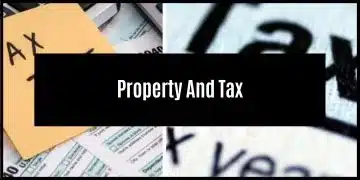The number one complaint I hear about rental property is related to tenants destroying a rental property and either claiming wear and tear – or just not paying at all. It’s become a contentious issue in the rental property sphere – landlords don’t want to pay for tenants ruining their property and tenants feel entitled to destroy the property.
I’ve had one experience of this myself. While doing the outgoing inspection, we discovered that the (recently bought) new stove has cracked plates and the oven isn’t working anymore. We picked up parts of the toilet seat throughout the flat. It was really a terrible experience when tenants don’t look after your place.
The real reason we’re asking what fair wear and tear relates to is if it is allowed for a landlord to withhold the tenant’s deposit and deduct those costs. But to answer this question we need to understand what fair wear and tear means
What does fair wear and tear mean?
When living on a property, many things will need maintenance over time due to usage. Fair usage would then be defined as an expected deterioration that can be reasonably expected to occur with regular use of the property, fittings and elements within the rental property.

The keywords for understanding if damage or issues within your property is a case of wear and tear are ordinary use, everyday usage, ageing, or exposure to weather elements.
So, what constitutes fair wear & tear? For example,
- Taps in the bathroom are used often, and the washers are bound to wear out over time.
- The cupboards get opened and closed a lot, and over time the hinges wear out
- The toilet mechanism is 200 years old and finally breaks
What is damage to property
Any deterioration that is not reasonable, or changes that have not been approved by the landlord. If this deterioration/damage done shortens the lifespan of the item or property substantially, it is seen as damage. The tenant is liable for this and the landlord can use the deposit for these issues. The keywords for this are damage, negligent and/or accidental destruction.
So, damage to property can include the following:
- The tenant paints the property a different colour without the knowledge and consent of the landlord
- Severe burn marks or big coffee stains left on the carpet cannot be reasonably fixed by deep cleaning the property.
- Cupboard doors have been forcefully ripped off.
Which costs are the responsibility of the tenant?
Tenants are only liable for damage to property, and not fair wear and tear. There have, however, been cases where the lines were blurred. For example, determining fair wear and tear on tiles, stoves and plugs can be challenging. Though the tenants are required to look after the property, they are under no obligation to fix structural defects of the property or leave the property in a better condition than they found it.
Conclusion
It would be ideal to have an elaborate legal explanation regarding what the difference is between wear and tear and damage to property. Unfortunately, this is not as clear-cut as we would like it to be.
We can however conclude that wear and tear are about the reasonable deterioration of existing infrastructure, elements, and fittings on the property. Damage has to do with willful or accidental destruction or defacement that will fall outside normal wear and tear. Any changes that are done on the property, without the consent of the landlord such as painting a wall, or adding nails to hang paintings can fall under the destruction of property.
Tenants are liable for all damages that wear and tear cannot be attributed to.
Happy investing!



